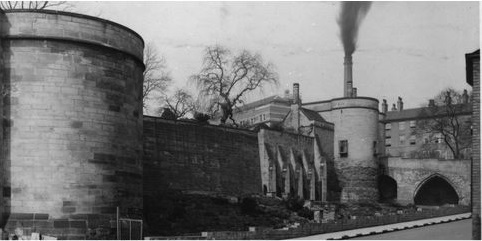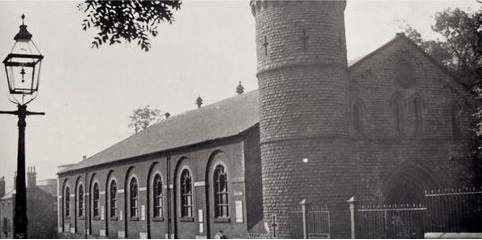
An archaeologist is appealing for information about a mysterious skeleton discovered 90 years ago in the ditch surrounding Nottingham Castle.
The body was found in May 1927 after the demolition of the Drill Hall which once stood on Castle Road, next to the gatehouse bridge, where the Robin Hood statue can now be found.
During groundwork after the demolition, labourers dug up part of a ditch forming the outer defences of the castle.
The workers found a human skeleton – and the bones were taken away to be examined, but no records of the examination have ever been found.
Now city archaeologist Scott Lomax is hoping to find out more in the 90th anniversary year of the discovery.
“We do know that the individual was a male, and was thought to be aged approximately 30 to 35,” said Scott, writing on his blog.
“When he died, we do not know. However, it would appear the ditch was partly filled when the individual’s body was discarded into it, suggesting the death took place late in the castle’s history.
“It is possible he was a casualty during one of the many sieges on the castle during the medieval period and Civil War, or he could have been a prisoner who was executed. Sadly it is only possible to speculate.”
Scott says there is ‘high potential’ that other skeletons are buried near the castle grounds.
In the 1970s a tibia of an individual believed to have been between 12 and 14 was found, and Scott says the rest of the skeleton is ‘likely’ to be buried near the castle.

The Drill Hall was a former 19th Century infantry stores and headquarters, knocked down to improve views of the castle.
Scott says reports from the time show that while digging in the fill of the ditch after the demolition, at a depth of between around 6ft and 8ft, the labourers first found bones and then a skull.
The bones were well preserved and it is believed the teeth were in a ‘perfect’ state of preservation.
The ditch, which gave Castle Road the name ‘Hollows’, was crossed by the gatehouse bridge leading to the gatehouse.
It was largely filled in during the 17th century but there was still a depression into the early 19th century.

It is thought that once the bones had been removed they were taken away for examination by a local professor – and the skeleton was reburied at a city cemetery – but exactly who was involved and where the body ended up is not know.
Scott says he believes the skeleton may have been reburied near Wilford Hill, and he has contacted the University of Nottingham and Nottingham Trent University in the hope of identifying who the professor was.
He added: “It is a long shot but if the professor can be identified there may be a paper trail of research he undertook and some records in an archive. Unfortunately the identity of the professor is so far a mystery.
“If anyone who has undertaken research into the city’s past has found any reference to this burial, and can shed any further light on it, I would be very happy to hear from you.”
He can be contacted at [email protected].

















